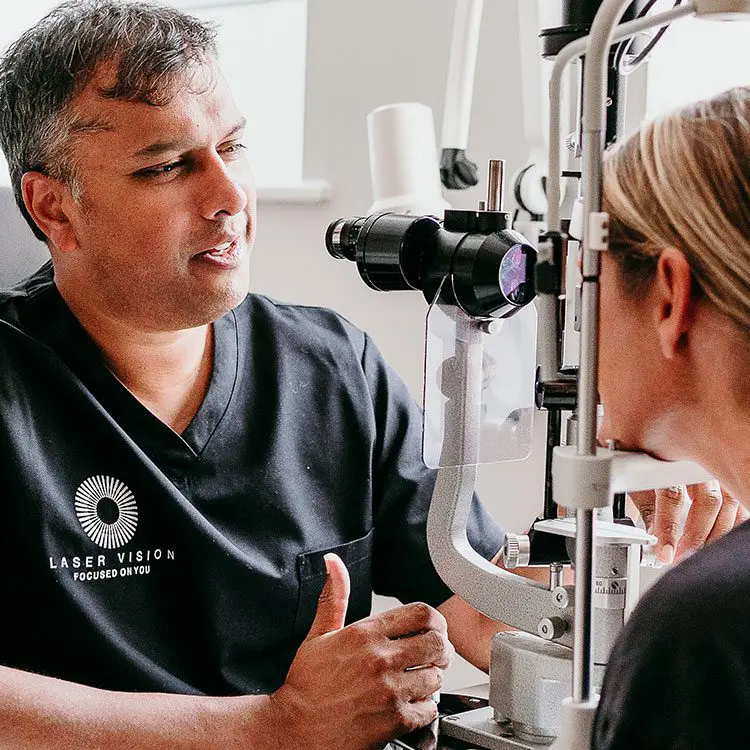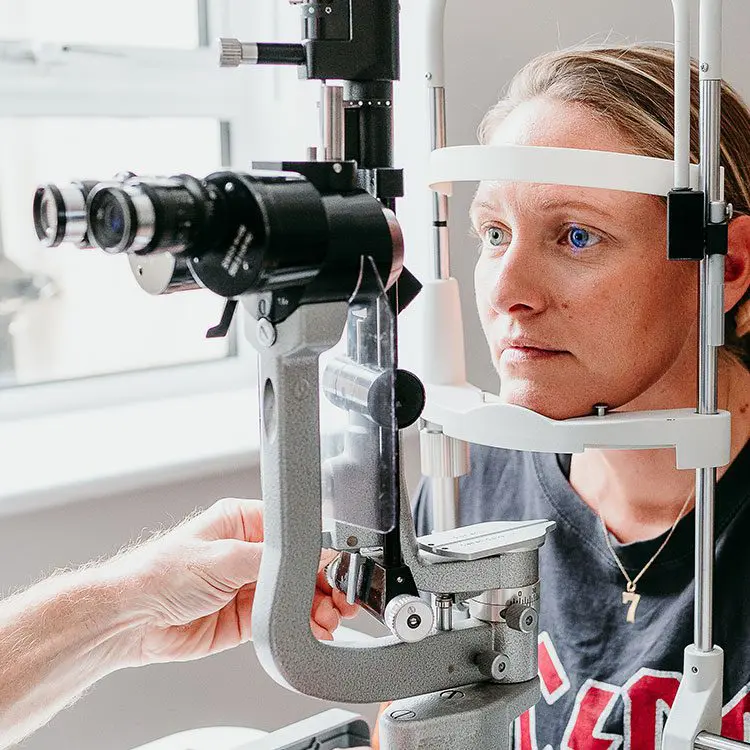




Astigmatism is a common condition in which the eye does not focus light evenly over the retina to result in distorted or blurred vision at all distances.
The opticians’ prescription will show two numbers, called ‘Sphere’ and ‘Cylinder’. The larger the cylinder is, the more astigmatism there is and the greater the blur.

What are the Symptoms?
What are the Causes?
Astigmatism is caused by irregularities in the curvature of the parts of the eye responsible for focusing light rays (the cornea and the lens). An even curve (a round eye) results in even distribution of the light rays making up an image, which will be clear.
If the curvature of the eye is uneven (rugby ball shaped), light rays will be unevenly distributed, causing blurred images at distance and at near. Clinical research highlights a strong genetic basis for astigmatism. Other associations include: previous scarring, trauma, surgery and conditions such as Pterygium and Keratoconus.



What is the Diagnosis?
Spectacles and contact lenses can be prescribed by your high-street Optometrist. For a permanent solution to astigmatism, refractive surgery can be a safe and viable alternative.
There are a number of methods available and one or more may be appropriate for you. The most familiar of these methods will be modern LASIK surgery in which the shape of the cornea (clear window on the front of the eye) is reshaped.
Other methods include the Implantable Contact Lens (ICL) and Refractive Lens Exchange (RLE). If astigmatism is caused by a pathology such as Keratoconus, therapeutic treatment (such as cross-linking) will stabilise the condition and may be more appropriate.


Treatment Options
Choosing the right vision correction clinic for your surgery is paramount. This is a life changing procedure after all, and you need to have complete trust in your surgeon and care team of professionals.
Our Technology
We invest in the latest equipment hand chosen by our surgeons, so that we can deliver outstanding results with the safest surgery possible.